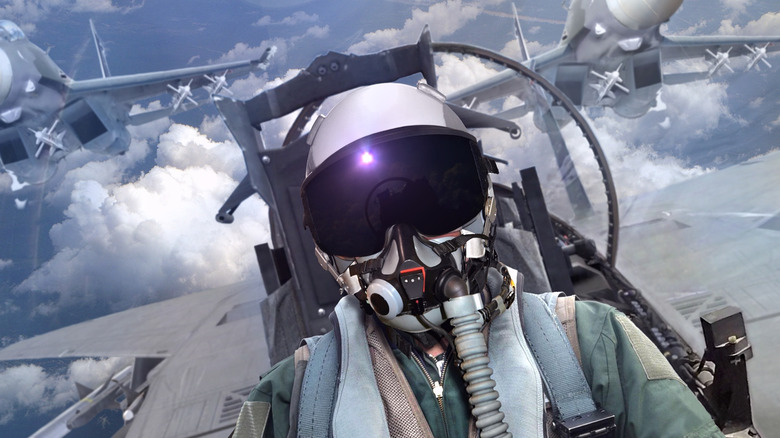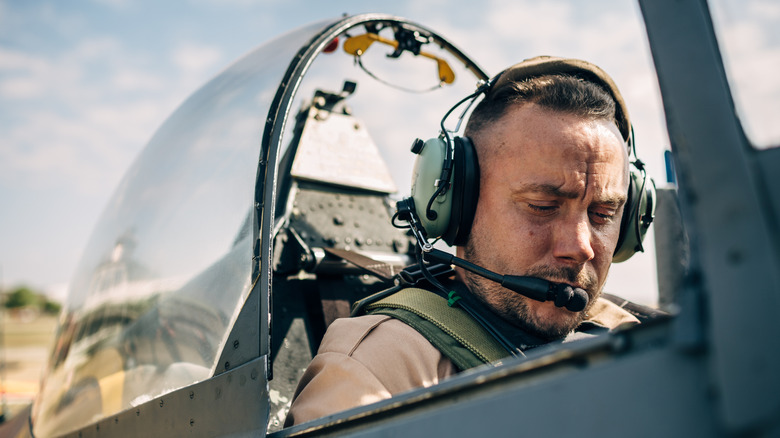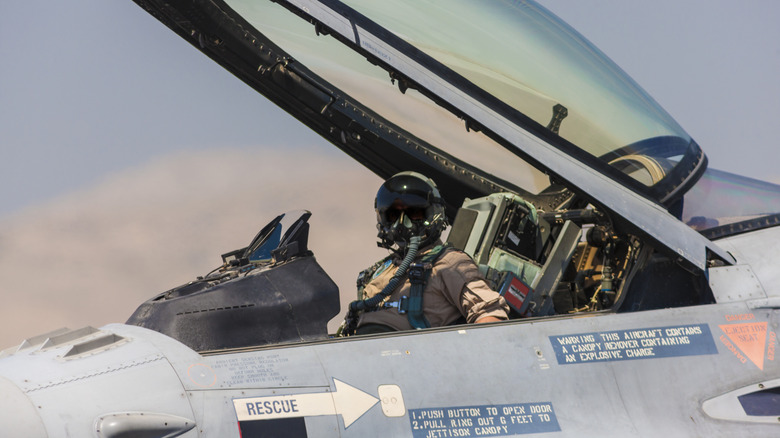How Noisy Is It Inside A Fighter Jet Cockpit?
Modern fighter jets are very loud. They can blast between 140 and 153 decibels of noise on takeoff when they use their afterburners, which is enough to burst a person's eardrums if they're at close range.
The explosive, high-pitched noise made by fighter jets comes primarily from their massive and powerful engines, which produce blasts of exhaust gases, creating that characteristic piercing sound. It is extremely loud inside the cockpit as well. In fact, the problem of cockpit noise and its impact on pilots has been a major concern in military aviation since before fighter jets even existed — it was first documented in the years following World War I.
It's not just the roar of the jet engines themselves that pilots have to worry about, however. Environmental Conditioning Systems, radio and communication, equipment and external noise all add to the problem. So just how noisy is it inside the cockpit of a modern fighter jet? Noise levels typically range from 95 to 110 decibels, and that can have a serious impact on the health and well-being of pilots.
The impact of cockpit noise
A 2023 study published in the Journal of the Korean Society for Aviation and Aeronautics proved that cockpit noise takes a major physiological and psychological toll on pilots.
Ear discomfort, hearing impairment, and even ear ruptures were identified as serious physiological consequences of exposure to cockpit noise. Anxiety, fatigue, lethargy, and other subjective symptoms were also reported. As for the psychological effects, they were found to manifest as stress, memory shortage, and an elevated error rate.
With more than half of the respondents agreeing that cockpit noise has had a negative impact on their health, the researchers concluded that "these adverse effects can significantly impact Air Force pilots' hearing health as well as their sensory, cognitive, and perceptual capabilities," adding that "the high level of noise can cause degraded pilot performance which can jeopardize aviation safety."
These results align with earlier research, including a 1998 study published in the National Library of Medicine that found 56% of the 166 participating pilots suffered from high-frequency hearing loss. In short, no matter how much fighter jet pilots train and prepare, they still face serious health risks due to prolonged exposure to cockpit noise.
Protecting fighter jet pilots from cockpit noise
There are two primary methods of noise protection: Passive Noise Cancellation (PNC) and Active Noise Cancellation (ANC) — you may have come across these terms in the context of ANC headphones and noise cancelling headphones.
PNC includes earmuffs, earplugs, and similar conventional technology that absorbs noise, providing a reduction of approximately 15 to 35 dB. PNC is effective for medium and high frequencies, but not for low frequencies. ANC, on the other hand, uses smart technology to create a superimposed soundwave that is an opposing signal to the original sound, effectively canceling out unwanted noise at low frequencies. In fighter jet helmets, ANC typically provides an additional reduction in average noise exposure of about 10 to 15 dB.
Due to helmet design constraints, most fighter jet pilots still use conventional helmets without ANC protection. Scientists recommend that both passive and active noise cancellation be used in order to properly protect pilots from noise and preserve their health.


